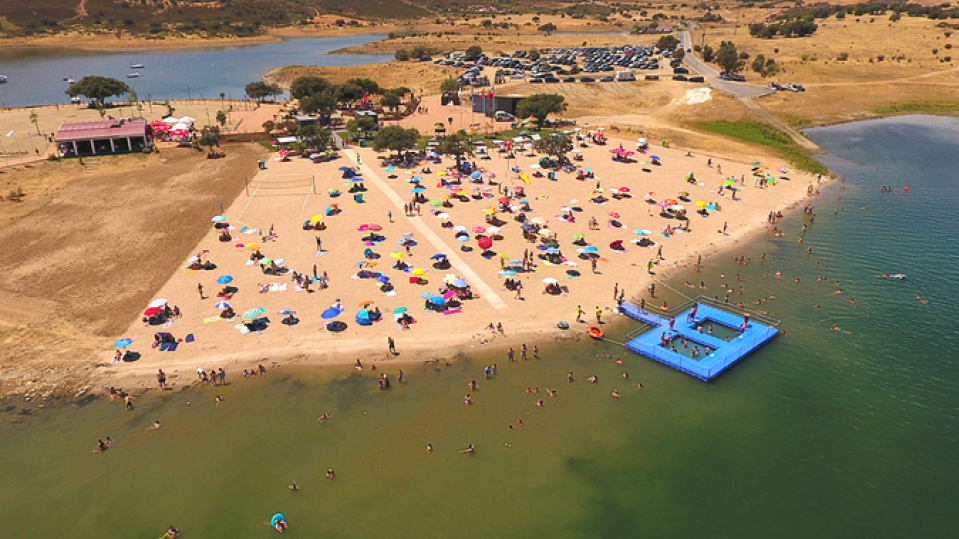The relevance of the area lies in its location, close to the Spanish border, where the historic need for defense meant planting villages and castles to populate and fortify the territory. Ten of those ancient settlements were the focus of a government initiative in 1991. Its purpose was to restore and promote them, with another two towns added to the list in 2003.
One thing people traveling in Portugal love most is discovering castles seemingly everywhere. There are, in fact, 284 in the country. It might seem a modest number compared to Spain, with its total of 1,459. Then again, Spain is about five times larger than Portugal in area. As impressive as these numbers are, they seem a pittance compared to France’s breathtaking 45,000, according to World Population Review. The Twelve Historic Villages of Portugal do not disappoint in this department.
Here’s a look at four of them, arranged in sequence for a seamless road trip, beginning in Linhares da Beira. These towns are close enough to cover without spending a night in each, but for a leisurely journey, this is what you’ll need to know.
The castle in Linhares dates back to Dom Denis, the sixth king of Portugal, who reigned from 1279 to 1325. He founded the first university in Portugal in Lisbon in 1290, which would later relocate to Coimbra, where a statue honors him on the campus grounds.
Hotel and dining: Book yourself into Inatel Linhares (about €75) which offers a pool, air conditioning, free parking and free WiFi. While in town, dine at Cova da Loba and order the caramelized duck breast with cherries and vegetables for €19 or a four-course tasting menu for €30.

On the road again: Hop onto R. Direita in Linhares and then N17 for 15 minutes (13.5 km). Follow A25 and IP2 to N102. Take the exit toward N226/Lamego/Trancoso from IP2, 13 min (21.5 km). Take N226 to Praça Dom Dinis in Trancoso.
Highlights here include not only the castle with its fifteen towers, but the Portas d’El Rei, Centro de Interpretação da Cultura Judaica Isaac Cardoso, and Casa do Bandarra, former home of sixteenth-century mystical poet Gonçalo Anes Bandarra. A shoemaker by trade, he has been considered the Portuguese Nostradamus.
Hotel and dining: Casas Tomé has excellent ratings and provides free breakfast, mountain views, and bicycle rentals and tours. Six languages are spoken here by staff members. Taberna do Bacalhau Frito is conveniently located next to the Portas d’El Rei. Try the restaurant’s famous fried cod dish.
To get to the next village, take Largo Luis Albuquerque/R. dos Cavaleiros and Av. Santa Isabel to N102-4. Follow N102-4, N102 and IP2 (24 minutes, 23 km).
Originally, a fortress sat high on a mountain massif here before the eventual construction of an impressive castle. Over the centuries, Romans, Visigoths, and Arabs invaded and occupied the area first settled by a prehistoric Lusitanian tribe. In addition to the castle, a church, a chapel, and the seventeenth-century court and jail should keep you busy. Oh, and an ancient Roman city: Civitas Aravorum.

Hotel and dining: Quinta do Nobre. This top-rated guest house, 400 meters from the town center, provides the usual amenities (including a saltwater pool) for around €90 a night. Hot springs and a winery are nearby. The Quinta has its own restaurant, but you might consider the number one-ranked restaurant in town, Pé de Cabra Bistro. Don’t miss the bruschetta entrée.
Onward to your next stop. Take N102 to ER324 and EM607, about 50 minutes (47 km) to arrive in
This castle town also contains palace ruins, a sixteenth-century pillory (where would a medieval city be without one?), and the nearby Faia Brava Nature Reserve.

Hotel and dining: Choose between Casa da Amendoeira (about €100) or Casa da Cisterna (about €200). There’s no pool at the first, but they do offer free breakfast, WiFi, and room service (not free). Game room and bar on the premises. Cantinho Café—dubbed “Craft Beer Lovers’ Meeting Point”—has been going strong for 30 years. Find it at Rua da Sinagoga, 1.
These four locations are just the start of covering the Twelve Historic Villages of Portugal. Thanks to Center of Portugal, you can explore the balance here, presented as a continuing route for you to enjoy smooth driving. The rest of the twelve are Almeida, Castelo Mendo, Sortelha, Belmonte, Monsanto, Idanha-a-Velha, Castelo Novo, and Piódão.
Happy trails!
Native New Yorker Tricia Pimental left the US in 2012, later becoming International Living’s first Portugal Correspondent. The award-winning author and her husband, now Portuguese citizens, currently live in Coimbra.

















